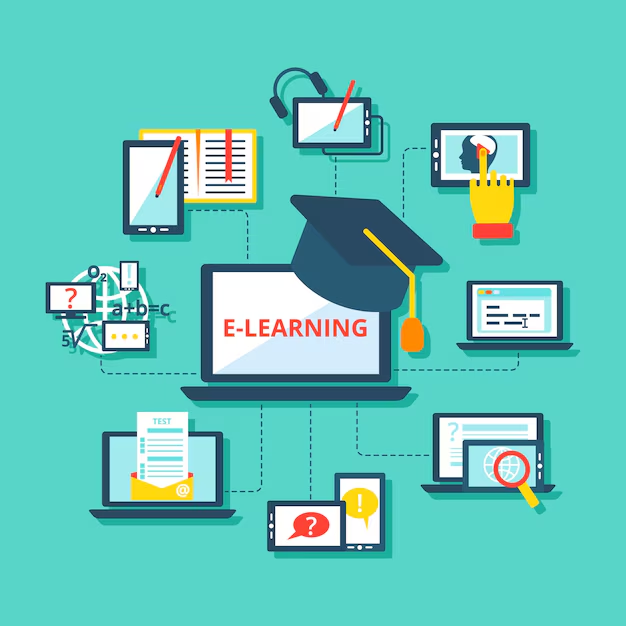Mobile compatibility
Education and training are not limited in the quickly changing digital terrain of today to the confines of physical classrooms. Here is where Learning Management System (LMS) software shows up as a transformative fix. An LMS is a tool meant to properly manage, distribute, and track instructional materials, thereby enabling seamless learning and training opportunities. It is a must-have tool in the modern era since it helps institutions, companies, and organizations to establish a centralized learning system.
A Learning Management System (LMS) is a complete software program for tracking, planning, and organizing learning activities. It offers a web forum whereby teachers, trainers, and students may interact, share information, and monitor development. Academic programs, corporate training, and e-learning courses are just a few of the needs LMS software meets. Using an LMS helps companies save time and money, guarantees consistency in the delivery of instruction, and raises student results.

The adoption of a Learning Management System (LMS) enhances the system of education and training in transforming ways. First of all, it gives students access to materials anywhere, at any time, providing flexibility. This breaks geographical restrictions and increases the inclusiveness of education. Second, it's a cheap fix since it eliminates the need for actual classrooms and printed resources so lowering running expenses. Through interactive elements such quizzes, gamification, and discussion forums, LMS systems also improve student involvement. They also offer statistics-driven insights that enable teachers to customize instruction depending on individual success.

A Learning Management System (LMS) runs on a series of integrated parts meant to simplify the learning process. Administrators of the content management system can upload and arrange interactive modules, papers, and videos, among other instructional resources. User management systems guarantee that teachers and students have the suitable responsibilities, rights, and access degrees. To gauge student performance, the system also incorporates tests, assignments, and quizzes. Tracking development, participation, and completion rates in reporting and analytics tools provides insightful information for growth. Moreover, most LMS systems have integration features that let them link with outside tools like CRMs or HR systems for maximum capability.

These are the advantages of using learning management software:
Mobile compatibility
Modern Security Policies
Learning Paths Customizable
Gamification and Interactive Devices
Mechanisms of Evaluation and Feedback
Reporting and analytics instruments
Integration with Outside Third-Party Applications
Support for Many Languages
Scalability toward Future Development
Often the argument between conventional education and LMS-based learning emphasizes the benefits of the latter. Conventional education depends on face-to-face interaction, which is constrained in time, place, and resources. Conversely, learning management systems for businesses gives unparalleled scalability and adaptability so that students may access top-notch knowledge anyplace. Furthermore included in LMS systems are creative teaching strategies such virtual simulations, multimedia presentations, and adaptive learning, thereby improving the effectiveness and enjoyment of education. Although both approaches have advantages, combining LMS-based and conventional learning produces a well-rounded education.
The need for including a strong Learning Management System (LMS) into corporate and educational institutions has grown to be unparalleled as we enter 2025. Institutions are looking for means to simplify and improve the learning process given the worldwide trend toward online and hybrid learning. An LMS centralizes all learning resources, therefore facilitating teachers' delivery of materials and tracking of student development. Furthermore supporting scalable learning solutions, these sites appeal to a broad audience anywhere. The increasing focus on lifetime learning and skill development makes LMS technology even more important to guarantee universities remain relevant and competitive. LMS systems should become indispensable by 2025 in order to satisfy changing needs of education and training.
Using a learning management system effectively calls for meticulous preparation and execution. Evaluating institutional needs initially helps to make sure the chosen platform complements organizational objectives. Then, teachers, managers, and students themselves need appropriate training and onboarding if they are to properly negotiate the LMS. Data migration must also be given top priority in institutions so that all past resources and student records are moved error-free. Technical help and continuous support are absolutely vital both before and after deployment to quickly handle difficulties. Institutions can maximize the possibilities of their LMS system by applying these guidelines and promoting a cooperative environment.
Although using a free Learning Management System has many advantages, schools could find difficulties during deployment and application. One typical problem is teachers or students who are not familiar with the platform resisting change. Comprehensive training and presentations on the benefits of the LMS will help to lessen this. Ensuring flawless integration with current technologies is another difficulty; so, one must select an LMS that enables outside integrations. Technical problems and maintenance can also affect usability; so, a responsive technical support team is rather important. Through proactive handling of these issues, organizations may guarantee the seamless operation of their LMS and provide a best learning environment.

Although purchasing a top Learning Management Systems can be a big financial outlay, its long-term advantages usually exceed any expenses. Modern LMS systems cut the requirement for physical materials, infrastructure, and travel costs for training, therefore saving money. The software also boosts productivity by eliminating administrative chores, therefore freeing teachers to concentrate on content delivery. Institutions have to assess the scalability, customizing choices, and quality of support services given to the LMS when thinking through cost-effectiveness. Even if the initial outlay may appear significant, LMS systems are a good investment for any forward-looking university given the long-term benefits in efficiency, adaptability, and learner satisfaction.
Here are the answers to some of the frequently asked questions regarding Online Learning Management System Software.
Software known as an Admission Management System is designed to automate and streamline an institution’s admissions process, ensuring accuracy, simplicity, and efficiency.
An LMS primarily serves to control the distribution, tracking, and assessment of instructional materials, thereby enabling effective learning.
Schools, colleges, businesses, nonprofits, and government agencies all use LMS systems extensively for training and educational needs.
Four major varieties exist:
An LMS helps companies to increase knowledge retention, simplify compliance, and improve staff training, therefore boosting general output. Organizations can revolutionize their training and education by including the appropriate Learning Management System, therefore opening fresh opportunities for development.
© Copyright 2025 All Rights reserved by Edtech Innovate Pvt Ltd